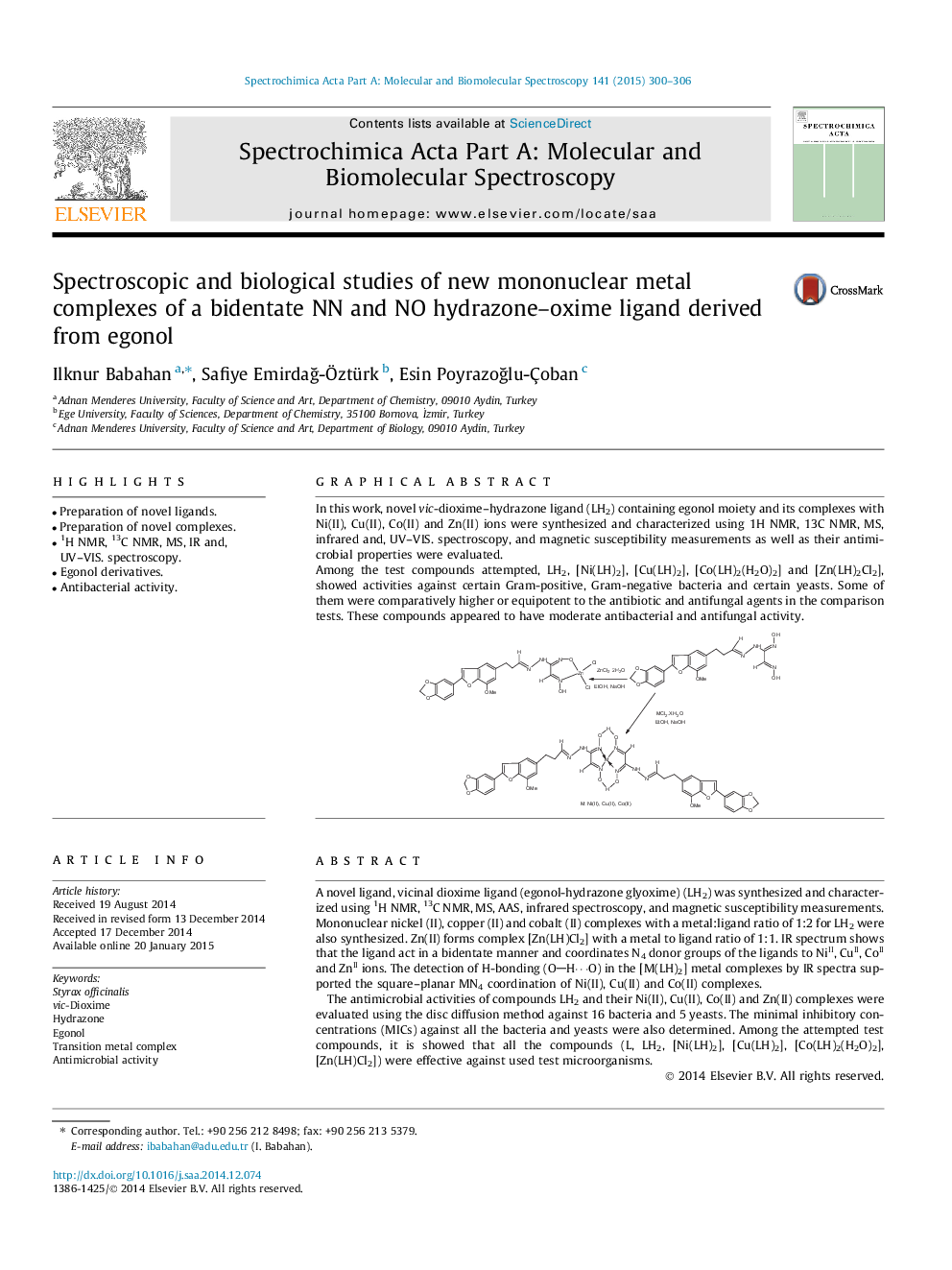| کد مقاله | کد نشریه | سال انتشار | مقاله انگلیسی | نسخه تمام متن |
|---|---|---|---|---|
| 1232418 | 1495228 | 2015 | 7 صفحه PDF | دانلود رایگان |

• Preparation of novel ligands.
• Preparation of novel complexes.
• 1H NMR, 13C NMR, MS, IR and, UV–VIS. spectroscopy.
• Egonol derivatives.
• Antibacterial activity.
A novel ligand, vicinal dioxime ligand (egonol-hydrazone glyoxime) (LH2) was synthesized and characterized using 1H NMR, 13C NMR, MS, AAS, infrared spectroscopy, and magnetic susceptibility measurements. Mononuclear nickel (II), copper (II) and cobalt (II) complexes with a metal:ligand ratio of 1:2 for LH2 were also synthesized. Zn(II) forms complex [Zn(LH)Cl2] with a metal to ligand ratio of 1:1. IR spectrum shows that the ligand act in a bidentate manner and coordinates N4 donor groups of the ligands to NiII, CuII, CoII and ZnII ions. The detection of H-bonding (OH⋯O) in the [M(LH)2] metal complexes by IR spectra supported the square–planar MN4 coordination of Ni(II), Cu(II) and Co(II) complexes.The antimicrobial activities of compounds LH2 and their Ni(II), Cu(II), Co(II) and Zn(II) complexes were evaluated using the disc diffusion method against 16 bacteria and 5 yeasts. The minimal inhibitory concentrations (MICs) against all the bacteria and yeasts were also determined. Among the attempted test compounds, it is showed that all the compounds (L, LH2, [Ni(LH)2], [Cu(LH)2], [Co(LH)2(H2O)2], [Zn(LH)Cl2]) were effective against used test microorganisms.
In this work, novel vic-dioxime–hydrazone ligand (LH2) containing egonol moiety and its complexes with Ni(II), Cu(II), Co(II) and Zn(II) ions were synthesized and characterized using 1H NMR, 13C NMR, MS, infrared and, UV–VIS. spectroscopy, and magnetic susceptibility measurements as well as their antimicrobial properties were evaluated.Among the test compounds attempted, LH2, [Ni(LH)2], [Cu(LH)2], [Co(LH)2(H2O)2] and [Zn(LH)2Cl2], showed activities against certain Gram-positive, Gram-negative bacteria and certain yeasts. Some of them were comparatively higher or equipotent to the antibiotic and antifungal agents in the comparison tests. These compounds appeared to have moderate antibacterial and antifungal activity.Figure optionsDownload as PowerPoint slide
Journal: Spectrochimica Acta Part A: Molecular and Biomolecular Spectroscopy - Volume 141, 15 April 2015, Pages 300–306